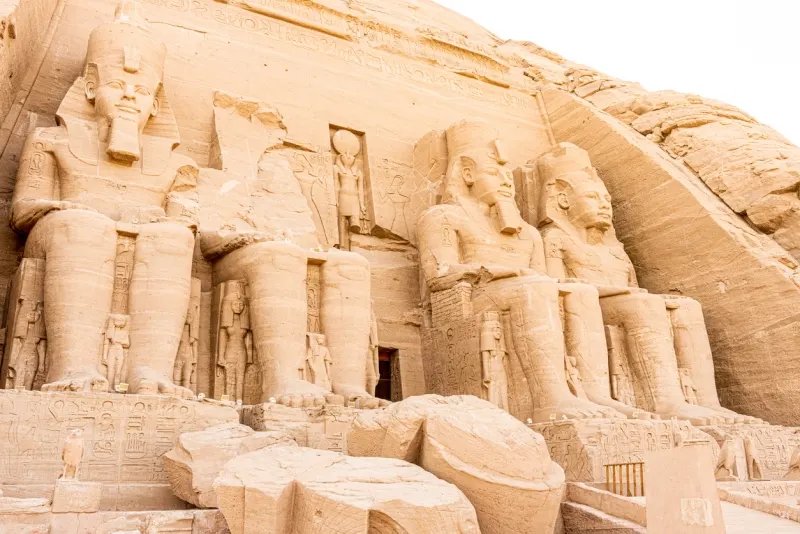The Middle Kingdom of Ancient Egypt
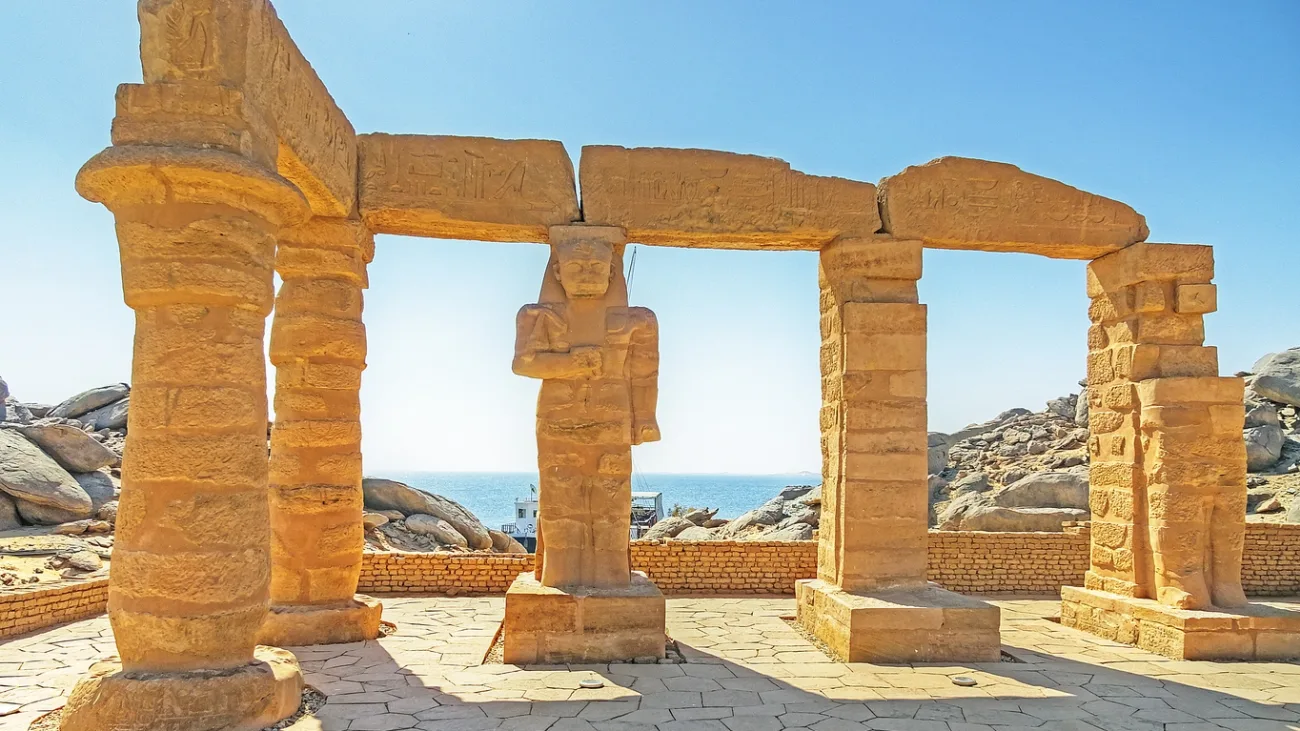
Cultural Achievements of the Middle Kingdom
Ancient Egypt's artistic landscape underwent a remarkable transformation during the Middle Kingdom's cultural renaissance. This crucial era brought groundbreaking developments that shaped Egyptian civilization for thousands of years.
The rise of Middle Kingdom art and statuary
Middle Kingdom artists broke away from traditional conventions. Sculptors created more lifelike representations through new techniques. The portraits of rulers Senusret III and Amenemhat III showed remarkably human qualities - their faces appeared careworn with furrowed brows and hooded eyes that revealed leadership's burden. The distinctive block statue emerged during this period. These figures appeared squatting with knees drawn to chest and remained popular for nearly 2,000 years. Regional artistic centers flourished - the Theban school emphasized elegance while the Fayum school preferred naturalism.
Literature and the birth of Egyptian storytelling
Middle Kingdom scribes took Egyptian literature to new heights. They moved beyond royal and religious themes to explore human experiences. The beloved Tale of Sinuhe and The Story of the Shipwrecked Sailor showcased this new narrative sophistication that blended entertainment with moral lessons. Didactic literature thrived through works like The Dispute Between a Man and his Ba, which challenged afterlife certainties, and The Satire of the Trades, which compared scribal work with manual labor. These works reflected individual psychology and society's hierarchies.
Religious shifts: Osiris and Amun cults
Religious practices changed dramatically as Osiris became the prominent judge of the dead. Osiris's cult center at Abydos became Egypt's most popular pilgrimage site. Middle Kingdom Egyptians built memorial chapels along procession routes to participate eternally in his festivals. Spring inundation brought annual reenactments of Osiris's funeral with elaborate rituals. Amun's importance grew steadily - Thebes became his sacred city, and Senusret I's reign saw the beginning of the grand Karnak temple complex construction.
Architecture: pyramids, temples, and tombs
Architectural innovation thrived despite fewer resources than the Old Kingdom. Middle Kingdom's pyramids featured mudbrick cores faced with limestone instead of solid stone construction. These structures, though less durable, had complex internal designs to prevent tomb robbery. Royal tombs evolved beyond simple pyramids. Senwosret III built both a pyramid at Dahshur and a separate tomb at Abydos, connecting ancient traditions with future burial practices. Temple architecture made substantial progress as decorated stone temples replaced mud brick structures throughout Egypt.
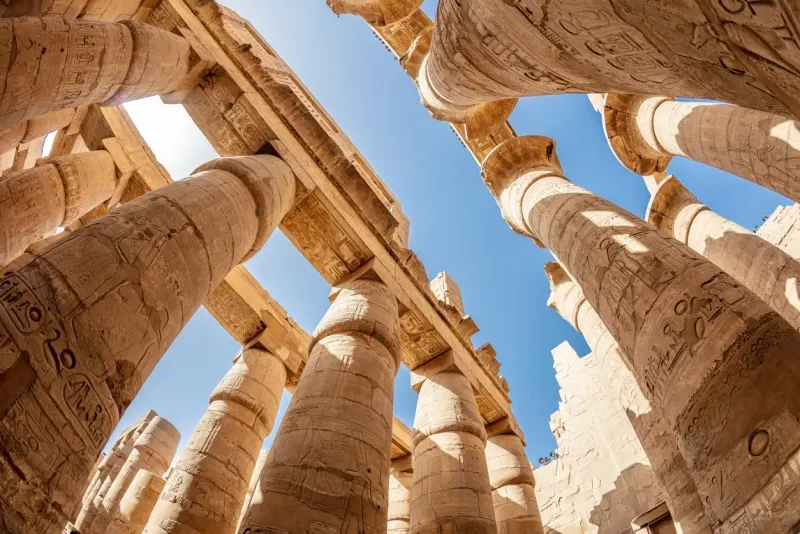
The Fall of the Middle Kingdom and Its Legacy
The golden era of Egypt's Middle Kingdom came to an end when Queen Sobeknefru died around 1782 BC. She left no heirs, and the civilization fell into another period of fragmentation.
The weakening of the 13th Dynasty
Egypt's decline began with the 13th Dynasty. A rapid succession of rulers marked this period. About fifty kings ruled over approximately 150 years. Some kings stayed in power for just a year or less. The kingship no longer passed from father to son but moved among leading families. Egypt's administrative structure broke apart as central authority weakened. The dynasty first ruled from Itjtawy near Memphis, but its influence gradually faded. Royal imagery during this time combined both idealizing and humanizing tendencies of earlier 12th Dynasty art. Many royal tombs stayed unfinished during this period.
Rise of the Hyksos and the Second Intermediate Period
Archeological evidence shows the Hyksos gained power in Egypt gradually, contrary to traditional stories of violent invasion. These Semitic settlers from the Levant had lived in Avaris for over 150 years before taking control. The foreigners took advantage of Egypt's internal divisions as the 13th Dynasty weakened. They founded the 15th Dynasty around 1650 BC. The Hyksos brought state-of-the-art advances to Egypt. They introduced bronze-working techniques, new crops, and most importantly, military technologies like the horse-drawn chariot and composite bow. Native Egyptian dynasties ruled the south while the Hyksos controlled northern Egypt. This created a divided kingdom.
How later Egyptians viewed the Middle Kingdom
The Middle Kingdom ended up as an idealized golden age for later generations. Ahmose I expelled the Hyksos and founded the 18th Dynasty around 1550 BC. Egyptian historical accounts then portrayed the Second Intermediate Period as a dark time of foreign control. The Hyksos actually helped preserve Egyptian culture. They managed to keep Egyptian texts alive and blended into Egyptian society while worshiping their own deities. In spite of that, foreign domination deeply affected Egyptian national identity. The military technologies the Hyksos brought ironically helped Egypt expand its empire during the New Kingdom. This period of weakness became the spark that revolutionized Egypt's path to greatness.
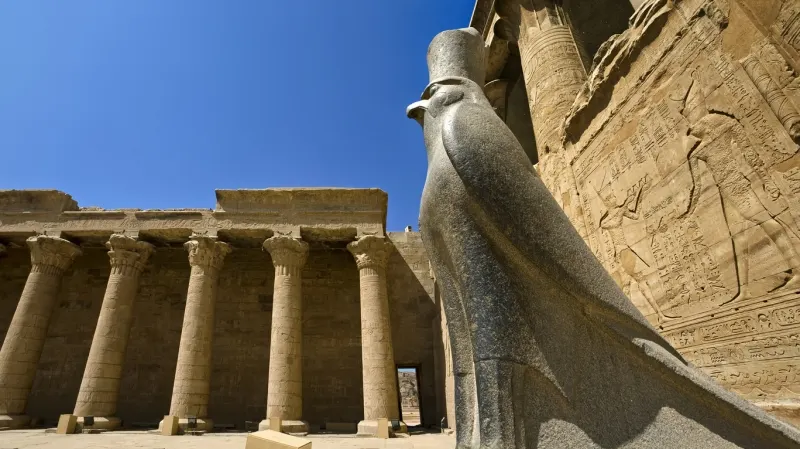
The Middle Kingdom (2040–1782 BC) was one of Egypt’s golden ages. It began when Mentuhotep II reunited Upper and Lower Egypt, bringing political stability, cultural growth, and new artistic styles that defined ancient Egyptian civilization.
You’ll learn about great rulers like Mentuhotep II, Amenemhat I, Senusret I, and Senusret III. They strengthened Egypt’s unity, expanded borders, and left behind incredible temples and monuments still visible today.
The Middle Kingdom was rich in art, literature, and architecture. Egyptians developed realistic sculptures, new literary works, and pyramid innovations that inspired later dynasties — all part of what you’ll explore on Egypt tours.
During this time, pharaohs centralized power by reducing local rule. Reforms by Senusret III ensured stronger control over the country, creating one of the most organized governments in ancient Egypt’s history.
The era declined as rulers weakened and the 13th Dynasty lost control. This opened the door for the Hyksos’ rise in northern Egypt, ending a remarkable chapter in the country’s story.
The Middle Kingdom of Egypt (2040–1782 BC) was a golden age of political unity, cultural revival, and artistic innovation. Founded by Mentuhotep II after the reunification of Egypt, it marked the civilization’s second peak. The 12th Dynasty strengthened central power, expanded into Nubia, and achieved remarkable advances in art, literature, and architecture. Though often overshadowed by the Old and New Kingdoms, the Middle Kingdom left a lasting legacy that shaped Egypt’s future history.
The Rise of Egypt’s Middle Kingdom
Egypt emerged stable and prosperous from centuries of division during the First Intermediate Period. Military strength, political wisdom, and a clear vision shaped Egyptian civilization. These elements became the foundations that would change Egyptian society for generations.
Mentuhotep II and the reunification of Egypt
Mentuhotep II of the 11th Dynasty achieved the impossible. He united Upper and Lower Egypt under one rule after 150 years of division. His campaign started from Thebes around 2055 BCE. The visionary ruler steadily won over northern territories from Herakleopolitan kings. His victories, particularly at Herakleopolis, ended the civil conflicts that had troubled Egypt since the Old Kingdom's fall.
Battlefield victories alone did not secure Mentuhotep II's success. His political strategy proved equally vital. He strengthened his position by adopting traditional royal imagery that showed him as both warrior king and divine ruler. Strategic marriages and appointments of trusted officials helped him establish his authority as Egypt's rightful pharaoh.
The role of Thebes as a new capital
Thebes became the Middle Kingdom's spiritual and administrative center, unlike earlier times when Memphis ruled. Under Mentuhotep II's leadership, this southern city grew from a small town into a magnificent royal hub. His burial complex at Deir el-Bahari marked this change and created an architectural style that future pharaohs would copy.
Thebes held strategic value. The city controlled access to Eastern Desert gold mines and served as a base for Nubian expeditions. The growing importance of Amun's cult center added religious significance to Thebes, which lasted throughout ancient Egyptian history.
Transition from the First Intermediate Period
Unity replaced fragmentation and brought deep changes to Egyptian society. The restoration of central authority revived the Old Kingdom's bureaucratic structure. The Middle Kingdom did not simply return to old ways.
The First Intermediate Period left lasting marks on Egyptian thinking. Provincial administrators (nomarchs) kept much influence under royal supervision. The period's literature and art showed new points of view. They acknowledged human hardship and questioned afterlife certainties- ideas unthinkable in earlier times.
This balance between old and state-of-the-art approaches became the life-blood that supported the Middle Kingdom's cultural achievements.
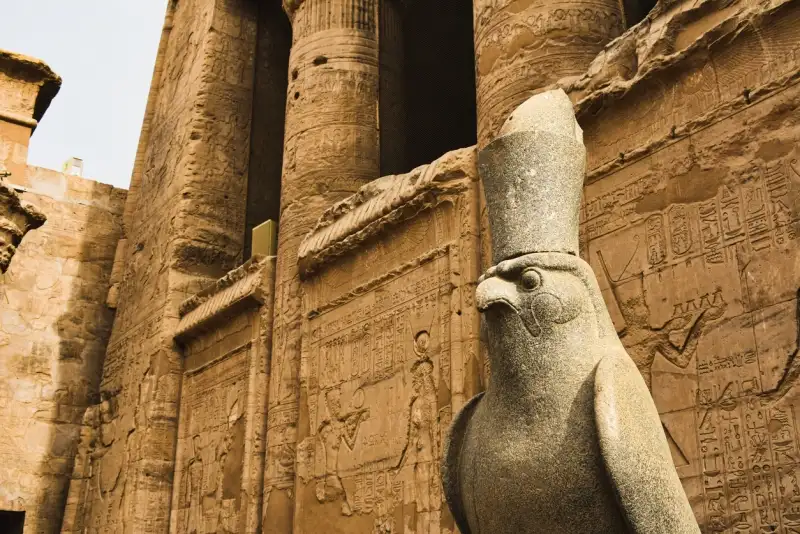
Customize Your Dream Vacation!
Get in touch with our local experts for an unforgettable journey.
Plan Your Trip
The Twelfth Dynasty: Power, Reform, and Expansion
The Twelfth Dynasty (1991-1802 BC) reached its peak during the Middle Kingdom. Egypt experienced territorial growth, innovative administration, and cultural achievements during this period. Amenemhat I founded this dynasty, which brought major developments to Egypt's government structure, military strength, and architectural feats.
Amenemhat I and the founding of Itjtawy
Amenemhat I started as a vizier under Mentuhotep IV. Historians believe he took power through force. He quickly strengthened his authority by defeating rebel nomarchs. His influence grew as he pushed back both Asiatics and Nubians.
He made a smart move to change the capital from Thebes to a new city called Itjtawy ("Seizer of the Two Lands"). The central location in the Faiyum region helped him watch over Upper and Lower Egypt better. His 45-year reign saw stronger defenses in Nubia and new land projects in Faiyum. He built diplomatic ties with Byblos and Hellenic rulers in the Aegean.
Senusret I and the rise of Karnak
Senusret I (c. 1971-1926 BC) took power after his father's assassination. He managed to keep stability despite the tough transition, thanks to his 10-year experience as co-regent. His armies pushed Egyptian control to the Third Cataract of the Nile.
The first construction at Karnak in Thebes started under Senusret I. This original building grew into Egypt's most impressive temple complex, dedicated to the god Amun. He also built pyramids at Lisht and renovated major temples throughout Egypt.
Senusret III's military campaigns in Nubia
Senusret III (1878-1860 BC) proved himself a powerful warrior-king. His military success expanded Egypt's influence by a lot. His Nubian campaigns were brutal, as his stele from Elephantine shows: "I carried off their women, I carried off their subjects, went forth to their wells, smote their bulls. I reaped their grain, and set fire thereto".
He built strong fortresses along the Nile to protect these conquests. These included Semna, Kumma, Uronarti, Shalfak, Askut, Mirgissa, and Buhen. A navigation canal near Sehel helped military movement through the First Cataract. His Year 16 stela at Semna marked Egypt's southern border with a warning to future kings.
Administrative reforms and the decline of nomarchs
Senusret III's detailed administrative changes became his lasting achievement at home. Egypt split into three administrative sections: North, South, and Head of the South. These areas covered Lower Egypt, most of Upper Egypt, and the Theban region. Senior officials in each section reported to a vizier.
This central control challenged the nomarchs' power. These provincial governors had enjoyed freedom before. The nomarch title, which dated back to earlier times, vanished during Senusret III's reign. Royal appointees replaced local hereditary rulers. This change gave the central government more control over Egypt's big resources and territories.
